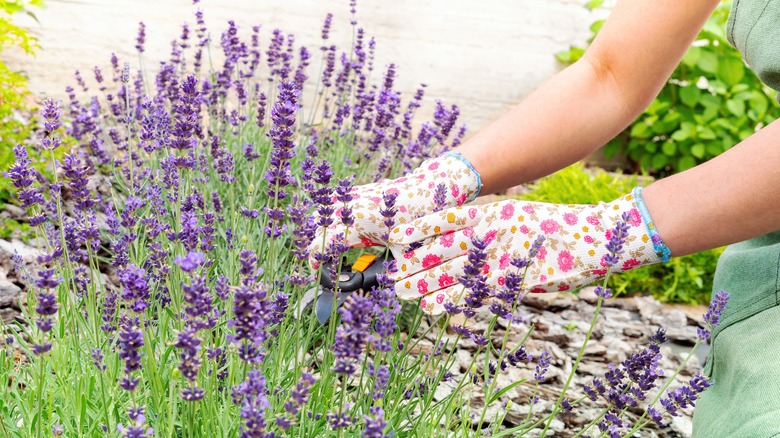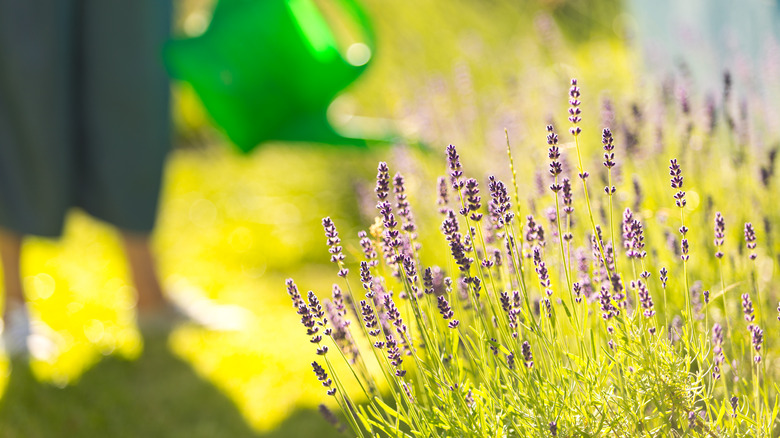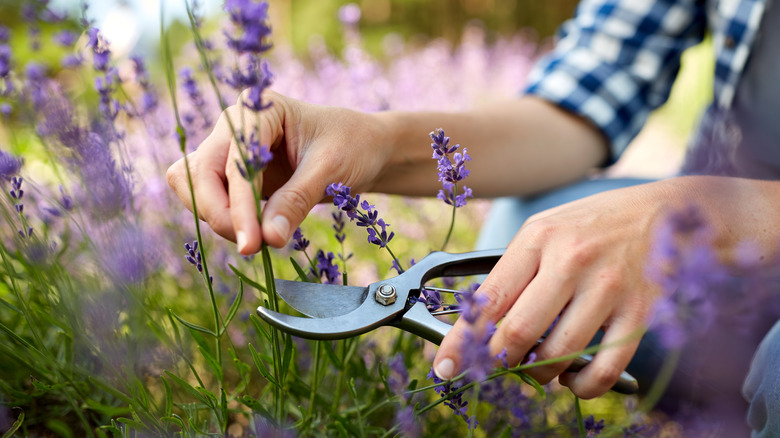Hide Your Rough Lawn Edges By Planting This One Fragrant Herb
Lavender is beloved by many because of its beautiful blooms and gentle, relaxing fragrance, so it's not uncommon to see it as an inclusion in gardens or as a standalone, decorative plant, but have you ever considered using it to cover the rough edges of your lawn? Instead of having to transition directly from grass to concrete — maintaining sharp edges to keep everything from looking messy — planting a bit of this fragrant herb can help to cover any ragged spots with a beautiful swath of purple.
Unfortunately, opting for lavender in your garden isn't completely hands-off, but it's one of the easier herbs to maintain. It'll take a bit more TLC and seasonal pruning to keep it looking healthy and lush, but occasional touch-ups will take much less time than having to attempt to edge your lawn in a straight line every time you mow it. Plus, there's always the added benefit of lavender's decorative power — one simple switch, and your lawn will go from basic to something out of a fairy tale.
Why lavender works to frame a lawn
Besides the obvious aesthetic appeal, lavender is a great choice for edging your lawn because it doesn't spread very quickly. For the most part, this fragrant herb stays where you plant it and simply fills out, meaning you won't have to deal with your lavender plants attempting to take over the rest of your lawn. The herb is also happy in direct sunlight, so there's no need to plant it in shaded areas to prevent wilting and shriveling.
It is, however, important to note that lavender is a shrub — i.e., not a plant that sits low to the ground — which is great for areas where you want to create an almost hedge-like effect. With this said, even if what you initially plant is fairly low to the ground, you should expect it to grow taller. If you want something that'll stay fairly short but still creates the same look for your lawn's rough edge, consider opting for a smaller variety of lavender, like Thumbelina Leigh English Lavender or Wee One Dwarf English Lavender.
How to care for lavender
As noted, lavender is fairly low-maintenance when it comes to care, but there are still a few things you can do to ensure it holds up throughout the year. First, plant the herb in an area with well-draining soil that receives a lot of sunlight — the edge of your lawn will likely meet both these requirements. Further, this shrub does well in slightly drier conditions, so it's best to avoid any areas that frequently get hit with runoff from the roof or form puddles easily. Again, your lawn's edge will likely not have to deal with either possibility, given its location.
From there, all you really need to do by way of regular maintenance of this fragrant herb is to water it when the soil is dry, especially during its first summer. Lavender is resistant to drought, so after it's established, it likely won't need much help to thrive.
On a yearly basis, you should also go in and prune your lavender plants to prevent them from looking unkempt and woody. In late summer after your plants have flowered, trim back any stalks that have already bloomed and cut back about an inch of the leaves. This is also around the time you can harvest lavender for optimal fragrance, so you can enjoy the fruits of your labor both outdoors and throughout your home if you decide to repurpose your trimmed blooms.


